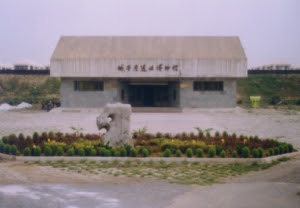Protected Sites: Chengziya Site

The Chengziya Site is located on the tableland along the bank of the Wuyuan River, east to Longshan Town of Zhangqiu County, Shandong Province (former Licheng County of Shandong Province).
The Chengziya Site was the first site discovered and excavated independently by Chinese archaeologists in the country. It was first discovered by archaeologist Wu Jinding in 1928, and the following excavations were carried out by the Central Research Institute during 1930-1931.
Covering an area of 15,648 square meters, the site was divided into two layers, with cultural relics of East Zhou period found in the upper one and Neolithic deposits featuring polished black pottery unearthed in the lower one. The site was initially named as the Black Pottery Culture, which was then changed to Longshan Culture. Now the site was officially referred as the Shandong Longshan Culture that dates back to 2,500-2,000 years ago. Black pottery wares unearthed in the site include cups, bowls, standing cups, plates, basins, pots, urns, and tripod caldrons, among which cup with hand, three-legged plate, long-handle standing cup, caldron shaped into bird head and legs, pitcher with three legs and cooking utensils were the most representative ones. Mover over, a kind of pottery, with a shining black color and a fine designed, was made as thin as eggshell, hence it gained the name of Eggshell Pottery. Fired with superb techniques to 1000 centigrade, it is regarded as the first-grade pottery. A rectangular tampered-earth wall site was discovered near the city site. With the wall base of 10 meters thick, the site, about 450 meters long from south to north and 390 meters wide from east to west, was believed to be the remains of city walls.
The excavation of the Changziya Site bears much significance in the Chinese archaeological history. The Longshan Culture discovered at the site helps to promote the study of the Neolithic culture in China.













No comments:
Post a Comment